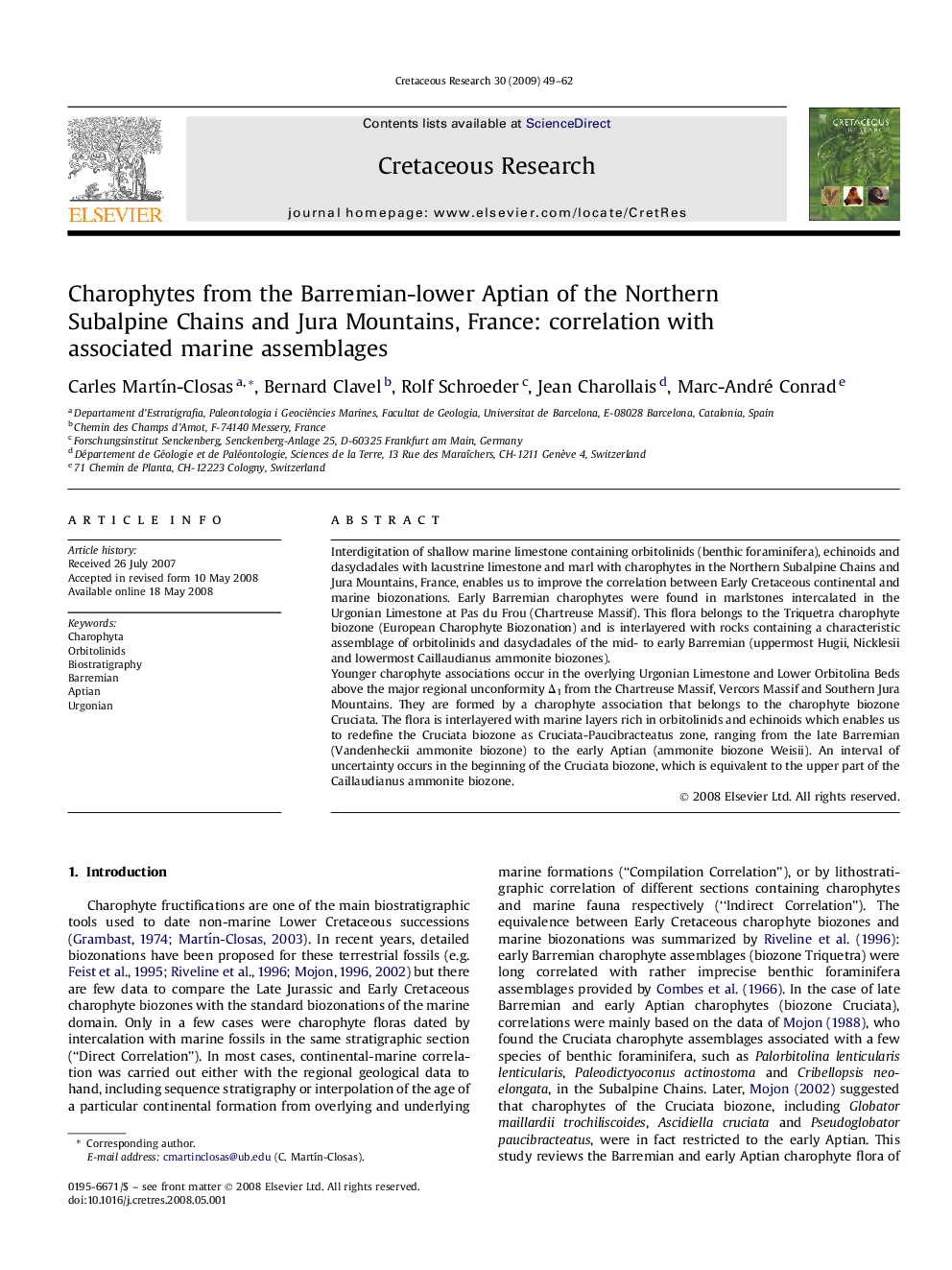| کد مقاله | کد نشریه | سال انتشار | مقاله انگلیسی | نسخه تمام متن |
|---|---|---|---|---|
| 4747613 | 1359925 | 2009 | 14 صفحه PDF | دانلود رایگان |

Interdigitation of shallow marine limestone containing orbitolinids (benthic foraminifera), echinoids and dasycladales with lacustrine limestone and marl with charophytes in the Northern Subalpine Chains and Jura Mountains, France, enables us to improve the correlation between Early Cretaceous continental and marine biozonations. Early Barremian charophytes were found in marlstones intercalated in the Urgonian Limestone at Pas du Frou (Chartreuse Massif). This flora belongs to the Triquetra charophyte biozone (European Charophyte Biozonation) and is interlayered with rocks containing a characteristic assemblage of orbitolinids and dasycladales of the mid- to early Barremian (uppermost Hugii, Nicklesii and lowermost Caillaudianus ammonite biozones).Younger charophyte associations occur in the overlying Urgonian Limestone and Lower Orbitolina Beds above the major regional unconformity Δ1 from the Chartreuse Massif, Vercors Massif and Southern Jura Mountains. They are formed by a charophyte association that belongs to the charophyte biozone Cruciata. The flora is interlayered with marine layers rich in orbitolinids and echinoids which enables us to redefine the Cruciata biozone as Cruciata-Paucibracteatus zone, ranging from the late Barremian (Vandenheckii ammonite biozone) to the early Aptian (ammonite biozone Weisii). An interval of uncertainty occurs in the beginning of the Cruciata biozone, which is equivalent to the upper part of the Caillaudianus ammonite biozone.
Journal: Cretaceous Research - Volume 30, Issue 1, February 2009, Pages 49–62